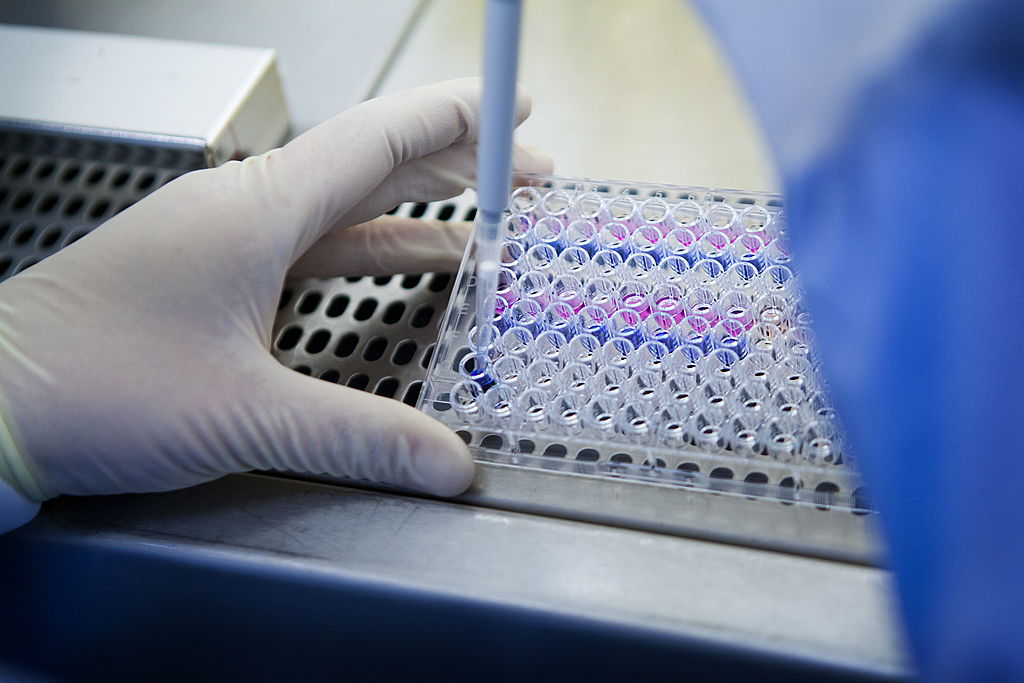
Despite significant strides in research and treatments–from liquid biopsy to vaccines, from precision medicine to CAR T-cell therapy–cancer remains the leading cause of death across the globe, taking some 10 million lives annually.
And beyond just the devastating human toll, cancer’s economic burden on patients and their families exceeds $21 billion each year, a number estimated to reach $25 trillion between now and 2050.
Recognizing that there is still much to do if we hope to ever beat this insidious disease, the White House announced recently a $240 million investment in the reinvigorated Cancer Moonshot initiative, which aims to cut the cancer death rate by half in the next 25 years.
Yet funding and policy, while critical, aren’t enough when it comes to enabling scientific breakthroughs; unfettered access to the latest research is just as vital.
With this understanding the White House provided a clear pathway for speeding innovation and facilitating greater scientific collaboration: its Office of Science and Technology Policy (OSTP) issued rules making all federally funded published research freely available—without delay, embargos, or subscription paywalls—not just for cancer, but for all life-threatening and life-altering diseases.
Open science pays dividends
This practice, called Open Science, focuses on removing barriers to creating and disseminating research and offers a promising strategy for realizing the Cancer Moonshot’s goals.
We need look only at the rapid discovery of COVID-19 vaccines to know that Open Science not only works but pays enormous human dividends.
During the pandemic, all COVID-19 research and data were made available through Open Science, enabling researchers to find treatment and vaccine solutions in record time. That’s evidence enough to show that when researchers open and share scientific research at scale, they can mobilize quickly, innovate, and save lives.
Shouldn’t cancer research data be made widely accessible, especially as new technologies make it possible to join the dots across enormous datasets?
It seems the answer is a simple “Yes!” But whereas scientific research thrives on openly accessible information, scientific publishing, which disseminates the discoveries, largely relies on limited, paywalled access. More than half of the world’s published research is locked behind expensive subscriptions. And it is a lucrative business: global scientific publishing is a $27 billion industry annually, dominated by a handful of companies and traditional practices slow to change.
Unless we embrace Open Science fully, historic achievements like COVID-19 vaccines may just be anomalies, and cures for cancer and other life-threatening diseases may take years, if not decades, to achieve.
Read More: How COVID-19 Is revolutionizing Healthcare Around the World
As it stands, vital knowledge that could help save or extend millions of lives—especially as we face unprecedented cancer drug shortages—is not immediately shared, nor widely accessible, nor free to read by the very individuals charged with finding the necessary cures and treatments.
And here’s why:
When researchers do their vital work, be it at public or private universities, non-profit or for-profit institutions, it’s often made possible through grants from federal funders such the National Institutes of Health or the National Science Foundation.
The scientists conduct groundbreaking research, pushing the boundaries of knowledge. Then, by opting to publish the results, they get external corroboration via rigorous peer review, and see their work appear in well-regarded scientific journals. There is an element of prestige in doing so, and often their career prospects can depend on publishing research.
Forcing tax-payers to pay again
But the subscription paywall model means the knowledge in those journals is sold back to universities and institutions who in turn pay large subscriptions, allowing only the scientists affiliated to them to access new research.
Deep-pocketed academic institutions can well afford to climb these subscription paywalls. But that leaves the scientists who are not affiliated with them in a quandary. And it forces American taxpayers, who collectively fund $5 billion in cancer research each year, to pay again if they want to read the results of it.
Surely scientific research that is funded by the public should be freely and immediately available to that same taxpaying public. The prevalent publishing business models—such as journals offering limited open access to articles, or subscription agreements where content escapes its paywall slowly, year by year—do not embrace that simple idea. They just preserve an increasingly outmoded way of teaching and learning.
Given the promise that Open Science holds for not only finding a cure for cancer but for helping address the world’s most pressing problems—debilitating diseases, public health crises, climate change, and more—the old ways of keeping science closed no longer make sense from an economic, political, or ethical perspective.
At Frontiers, the most-cited multidisciplinary scientific publisher in the world, we have pursued Open Science since our inception 15 years ago, and we are not the only ones. Leading research organizations like NASA are transforming the way they work to embrace Open Science practices; large Australian, European, and U.K. funders are updating their policies to replace paywalls with wide and immediate dissemination of new research; and the United Nations is a driving force behind Open Science policy recommendations.
Fighting cancer should be no different. Science policymakers and funders must mandate Open Science, science publishers need to transition their subscriptions to Open Science models fast, and Congress needs to codify the OSTP guidelines, which can change by presidential administration, as federal law.
Realizing the goals of the Cancer Moonshot will not be easy. But, with 10 million lives at stake each year, Open Science can help us achieve them.
More Must-Reads From TIME
- The 100 Most Influential People of 2024
- How Far Trump Would Go
- Scenes From Pro-Palestinian Encampments Across U.S. Universities
- Saving Seconds Is Better Than Hours
- Why Your Breakfast Should Start with a Vegetable
- 6 Compliments That Land Every Time
- Welcome to the Golden Age of Ryan Gosling
- Want Weekly Recs on What to Watch, Read, and More? Sign Up for Worth Your Time
Contact us at letters@time.com